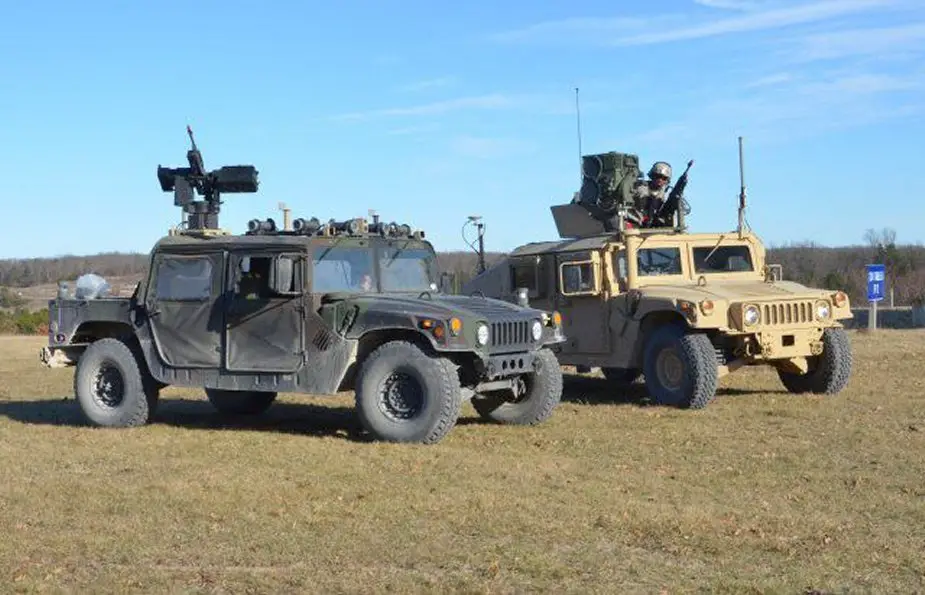The US Army’s Robotic “Wingman” Humvee: firing tests
Two Humvees are currently involved in the Wingman experiment: a manned M151 and an unmanned M1097 Wingman. Firing tests aim at qualifying the programme.

M1097 Wingman and M151 Humvees (Picture source: US Army)
Inside the M151, three men are assigned to take over key Wingman tasks. One of them handles Wingman’s target detection and laser range-finding, the second pulls the trigger on the Wingman’s gun, and the third one drives the vehicle if necessary.
A difficulty faced with an armed autonomous vehicle like the Wingman resides in the need for a high rate of reliability because it can expect less maintenance than weapons fired by humans. Previous Wingman weapons included a remote-controlled M2 .50 machine gun and an M240 7.62mm machine gun. Unfortunately, gas-powered weapons such as these MGs jam when not regularly maintained.
A solution has been found with the Advanced Remote/Robotic Armament System (ARAS). ARAS is a complete 7.62mm MG that weighs 410 lbs., including the mount and 1,500 rounds. ARAS has a heavy, fluted barrel that can survive burning through its entire ammo supply in less than five minutes. The gun is capable of 360° fire, 90° elevation and -30° depression. The system can load a fresh ammo pack in just six seconds. ARAS is paired with the Autonomous Remote Engagement System, which uses vision-based automatic target detection and user-specified target selection.
The 3-year, $20-million Wingman project is headed to the firing range, either the National Guard base at Camp Grayling (Michigan) or Fort Benning (Georgia), to qualify on the Scout Gunnery Table VI course. If it qualifies, it will be a major milestone in ground remotely operated weapons.


























